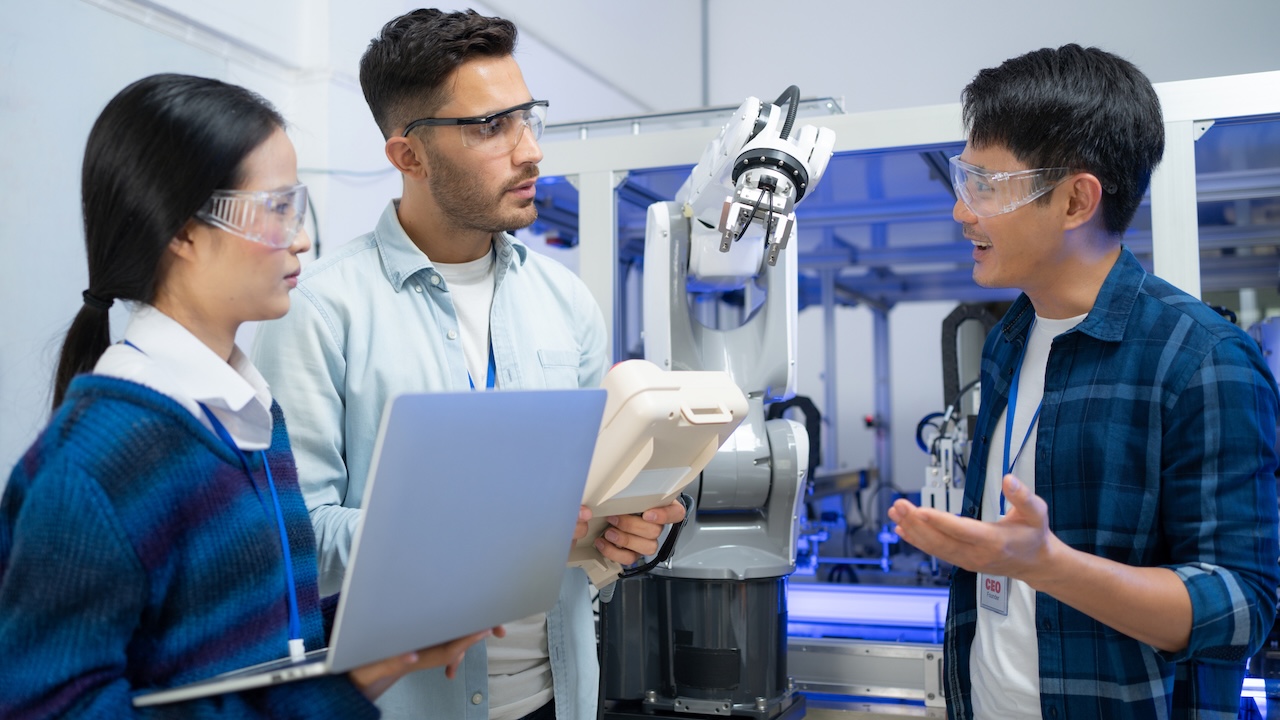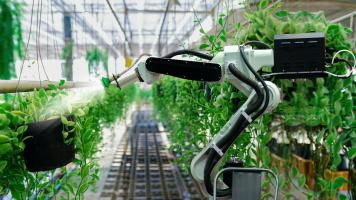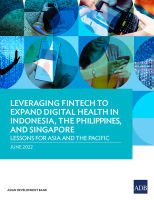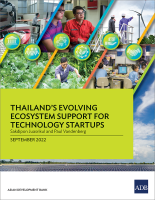Unlocking Deep Tech’s Potential for Sustainable Development in ASEAN+3

Head of Startups and Digital Inclusion, Economic Research Institute for ASEAN and East Asia (ERIA)

Program Officer, Economic Research Institute for ASEAN and East Asia (ERIA)

About 97% of deep tech ventures strive to meet at least one of the SDGs, says a new report. Photo credit: iStock/Siam Virachitevin.
Strengthening the overall ecosystem should be a priority while taking into account the disparities in market, infrastructure, human capital, and technology creation.
This article is published in collaboration with the Economic Research Institute for ASEAN and East Asia (ERIA).
As global attention toward deep tech intensifies, ASEAN+3 countries stand poised to leverage their potential for sustainable progress, provided that regional innovation ecosystems are strengthened. Over the past decade, global investment in deep tech has doubled, accounting for 20% share of venture capital in 2023. This surge can be attributed to deep tech’s immense potential to address intricate global issues, including sustainable development. Accordingly, 97% of deep tech ventures strive to meet at least one of the Sustainable Development Goals (SDGs), according to a new report, Bolstering Deep-Tech Entrepreneurship for Sustainable Development in the ASEAN+3 Countries.
In ASEAN+3 countries, deep tech startups are already contributing toward the SDGs by creating employment opportunities, empowering marginalized communities, improving access to education and healthcare, providing sustainable energy solutions, and ameliorating resources management, among others. Supported by vibrant innovation ecosystems, favorable demographics, and robust economic growth, deep tech in the region is even more uniquely positioned to aid countries in escaping the “middle-income trap” as it accelerates the transition toward a more sustainable and inclusive knowledge-based economy.
Artificial intelligence-driven startups like Singapore’s FathomX, and Viet Nam’s NT2P are enhancing access to healthcare by accurately analyzing medical data and delivering tailored diagnostics and treatment more efficiently. Similarly, Japan’s Fermata and the People’s Republic of China’s Bonzun also leverage AI to empower women by providing educational resources, increasing awareness, and personalized fertility solutions. Meanwhile, solutions from other regional startups, such as Singapore’s Lumitics for food waste management, Republic of Korea’s (ROK) DEEPX for energy-efficient semiconductors, Thailand’s Nano Coating Tech for solar panels, Japan’s Synspective for synthetic aperture radar satellite-based disaster imaging, and Lao People’s Democratic Republic’s LOCA for developing electric vehicle ecosystems, have all contributed to SDG Pillar 13 by addressing climate change.
However, optimism about the region’s potential must be balanced with caution, lest critical shortcomings be overlooked and progress remain uneven. An examination across key indicators (i.e. market, infrastructure, human capital, and technology creation) reveals that the capabilities and ecosystem maturity still vary greatly across ASEAN+3 countries.
Nearly all individuals in more advanced ASEAN+3 countries have internet access, yet only 44% do in Myanmar. Investment in tertiary education and research and development (R&D) also drastically varies, with the highest levels in the ROK, reaching 0.92% and 4.93% of gross domestic product (GDP) respectively, and the lowest investment of just 0.04% of GDP for both indicators in Lao PDR. This disparity is reflected in patent intensity, which ranged from 4,599 patent applications per million people in the ROK to only eight in Lao PDR in 2022. Industrially, over 50% of manufacturing in advanced economies like Singapore, Japan, and ROK is high-tech, compared to less than 5% in Cambodia and Brunei Darussalam. As a result, policy responses are heavily fragmented with developed countries possessing targeted and advanced deep tech strategies, while others have not even defined the term.
Moreover, the development and challenges for deep tech startups are closely associated with the broader entrepreneurial ecosystem, meaning countries with less developed ecosystems might struggle more to leverage the innovation, risking widening disparities and going against the region’s motto of "leaving no one behind.”
Given the complexity and novelty of their technologies, deep tech startups typically require more funding and early-stage support. Yet, startups in the region remain underfunded compared to their North America and European counterparts, which attracted 49% and 20% of global deep tech investment respectively in 2023. Limited track records, smaller opportunities, and regulatory inconsistencies or insufficient government support are often to blame. The sector demands of a higher caliber of talent also pose a major barrier to growth. While founders often have science, technology, engineering, and mathematics backgrounds, advanced degrees, and industry experience, the region continues to face a shortage and uneven distribution of skilled professionals.
Several actions must be prioritized, especially for countries to strengthen the overall ecosystem in which deep tech startups can thrive. The ASEAN+3 deep tech report has outlined 10 policy recommendations to guide this effort.
A critical first step is for countries to harmonize and adopt a common definition for “deep tech.” Without one, data collection to inform policy, as well as monitoring and evaluation efforts becomes challenging, hindering cohesive and effective actions.
Second, the ASEAN+3 region must expand and develop talent enhancement, attraction, and circulation programs. Governments can promote cross-border talent circulation between more and less mature deep tech ecosystems through tertiary education exchanges programs, tailored visa policies for tech entrepreneurs and other highly skilled professionals, as well as initiatives to connect startups with relevant diaspora networks.
Third, public–private matching funds should be enhanced as an alternative to deep tech startups’ early-stages funding gap, given their high-risk and long-term nature. The mechanism can be complemented with investment-readiness programs that connect founders and investors, as well as tax incentives to further dampen the perceived risks and attract more investors.
Fourth, stronger demands for deep tech products and services must be cultivated through both industrial partnerships and public procurement, among others. Government engagements in sectors like education, healthcare, and cleantech can also drive demand-pull innovation, while policies connecting startups with industrial bases can accelerate commercialization and scale-up.
Fifth, efforts need to be directed toward improving the commercialization of research and the transfer of technology from universities and research institutions to the market. Collaborative efforts such as proof-of-concept stages and product co-development with corporates will ensure smoother transitions from lab to market and create mutual value.
Sixth, physical and digital infrastructure must be enhanced as cutting-edge technology requires robust facilities to thrive. It is recommended to establish co-working spaces, innovation hubs, and technology parks, all equipped with high-speed internet and testing facilities. Meanwhile, non-physical infrastructure such as entrepreneurial culture, mentorship networks, and workforce development initiatives, can help accelerate the commercialization of research.
Seventh, regulatory reform efforts must be set in motion to alleviate administrative burdens, creating a business-friendly environment. It entails aligning domestic regulations with international standards to enhance global competitiveness. A centralized digital platform could also offer startups a one-stop solution for policy guidance, funding opportunities, and regulatory guidance.
Eighth, regional mechanisms should be leveraged for networking among startups, venture capitalists, and supporters, providing increased access to market and fundings. Initiatives like Deep Tech Hubs Network, cross-border startup tours, and an ASEAN+3 Deep Tech Summit are able to facilitate networking, investment, and knowledge sharing from mature ecosystems to the less developed ones.
Ninth, the connection between deep tech innovation and the SDGs should be more explicitly explored and integrated into policy design. ASEAN+3 countries may benefit from comprehensively mapping priority deep tech areas that align with the national and regional sustainability objectives.
Finally, consistent, periodical monitoring must be conducted as the baseline for evidence-based policy design, implementation, and assessment. Considering the lack of data availability and standardization in the region, partnership with a range of public and private entities are paramount.
With shared commitment, ASEAN+3 can cultivate a thriving deep ecosystem that drives inclusive growth and sustainable growth across the region.

Giulia Ajmone Marsan
Head of Startups and Digital Inclusion, Economic Research Institute for ASEAN and East Asia (ERIA)Giulia Ajmone Marsan is an innovation, technology, and entrepreneurship strategist, with over 15 years of experience in economic policy analysis and advice, capacity building, and economic diplomacy. She has advised a broad range of government officials, international organizations, and other stakeholders across Asia, Latin America, and Africa, as well as member countries of the Organisation for Economic Co-operation and Development. She co-chaired the Inclusion Task Force of Startup20 under G20 India and was a member of the ESG Task Force of Startup20 under G20 Brazil.

Adelia Rahmawati
Program Officer, Economic Research Institute for ASEAN and East Asia (ERIA)Adelia Rahmawati joined the Economic Research Institute for ASEAN and East Asia (ERIA) in July 2024 as a program officer. In this role, she supports the newly launched project between ERIA and the ASEAN Institute for Peace and Reconciliation on women, peace, and security and women in the digital economy. Prior to joining ERIA, she worked as an analyst at the Coordinating Ministry for Economic Affairs of the Republic of Indonesia, where she provided extensive analysis of Southeast Asia's economic issues and trends.

ERIA (Economic Research Institute for ASEAN and East Asia)
ERIA is an international organization that was established in 2008 by an agreement of the leaders of 16 East Asia Summit (EAS) member countries. Its main role is to conduct research and policy analyses to facilitate ASEAN Economic Community (AEC) building and to support wider regional community building.


